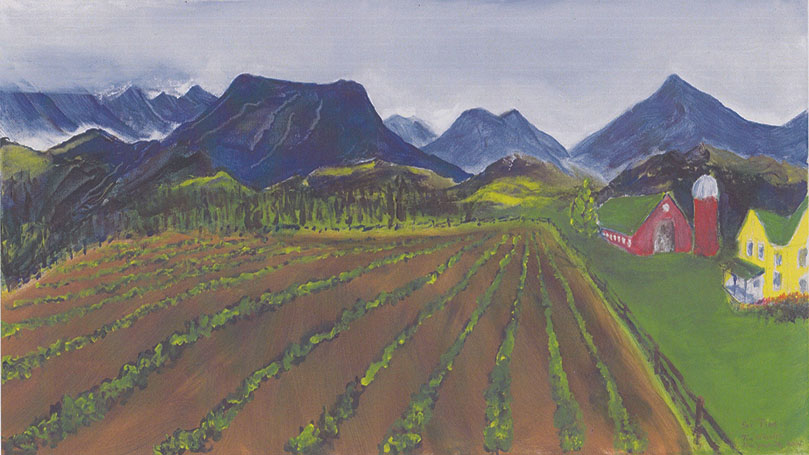
A popular bumper sticker reads: “No Farms, No Food.” A similar notion was expressed by Lem Harris in his weekly column in the Daily Worker, now the People’s World, titled, “If You Eat, You’re Involved in Agriculture.”
As a folk song puts it, “farmers live on credit till the fall” and “If you’ll only look and see I am sure that you’ll agree that the farmer is the one who feeds us all.”
Once numbering 7 million, there are only about 2 million farms left in the U.S. Each farmer produces enough food to feed 166 people (in 1960, each farmer produced enough food to feed 26 people).
The U.S. Department of Agriculture lumps Forestry, Fishing, Textile, and Food Service together with farm production. In total, this sector of the economy added $1 trillion to the gross domestic product in 2016. And that does not include other rural-based industries: coal, oil and natural gas, copper, aluminum, iron, and other hard-rock mining.
All of it is in crisis, now aggravated deeply by COVID-19. Farm net income has plunged to record lows, debt is surging. During Donald Trump’s disastrous presidency nearly 10% of farms, 200,000, went bankrupt.
Armed militias, instigated by Trump, stormed the U.S. Capitol on January 6 seeking to overturn the November 3 election. Most of the domestic terrorists implicated in this abortive coup d’état are based in rural America.
In many parts of rural America, right-wing vigilantism has been a scourge for centuries. Think of the Ku Klux Klan night riders enforcing white supremacy through lynching throughout the South and beyond.
Today, these domestic terrorists have reappeared. They seized on Trump’s opposition to COVID-19 protective measures to terrorize the Michigan legislature, threatening to assassinate Gov. Gretchen Whitmer. Armed to the teeth, they also terrorized towns like Klamath Falls, Oregon, and Forks and Sequim, Washington, before taking over the U.S. Capitol in Washington, D.C.

Trump received only about 20% or 14 million votes in rural counties. Yet in many rural counties he outpolled Democrat Joe Biden. The Democrats lost 10 seats in the House and failed to win several U.S. Senate races they hoped to win. They lost many seats in state legislatures.
Statistical analysis of presidential votes shows that non-metropolitan areas had the largest vote margins in support of Trump in both 2016 and 2020. The margin, about 34%, did not change much between the two elections.
Only about 14% of the nation’s population lives in non-metro areas. Yet the narrow margins and the fact that every state regardless of population — Wyoming and California, for example — has two Senators, gives this demographic disproportionate power. It is a flagrant violation of the basic principle, “one person, one vote.”
Beyond immediate electoral politics, the divide between urban and rural is concerning for humanitarian, ideological, and strategic reasons. The rural population has every reason to side with the grassroots movements based in urban and suburban America. Problems of debt, poverty, hunger, homelessness, unemployment, bad utility grids, climate insecurity, and lack of healthcare are acute.
Vertical integration (corporate monopolization) of farming makes it increasingly difficult for family farms to survive. Though only about 1 in 10 rural residents are farmers, the situation raises issues of rights to ownership of land and homes, inheritance, and ability to live in rural America.
The warning signs are clear: The Democrats now control — with narrow majorities — both the House and Senate and won the Presidency with 81,000,000 votes. They have less than two years, until the 2022 midterm elections, to push through a program to overcome COVID-19 and to assist millions of workers idled by the pandemic and suffering loss of income, evictions and foreclosures, and loss of health care.
The Republicans are counting on a base in rural America to obstruct Biden-Harris and the Democrats and take back majority control of the House and Senate in the mid-terms. They see this as setting the stage to retake the White House in 2024.
That is why all the progressive and centrist movements that won so heroically in November 2020 must counter the Republican infiltration of rural America. Our goal must be to win rural America to the cause of progressive change. It means a platform that addresses the crisis in rural America — farm bankruptcies, ruinous farm debt, rural unemployment, poverty, hunger, homelessness, lack of health care, and depopulation so acute that many rural towns are becoming ghost towns.
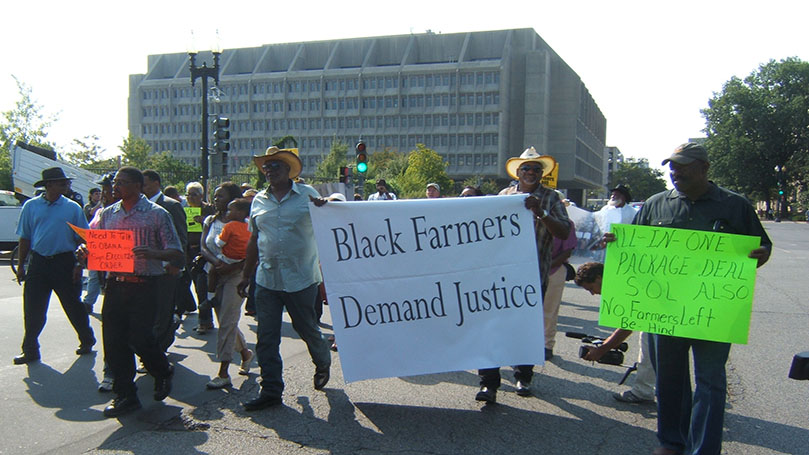
And like urban and suburban America, the struggle for democracy is central in rural America — securing the right to vote; ending police brutality and lethal use of force against unarmed African Americans, Latinos, Native American Indians, and Asian Americans; and ending armed vigilante intimidation and terrorism in rural communities.
And it means, also, fighting and winning the ideological struggle. Trumpism may be good for the billionaires, the greedy, and the bigoted. It is not good for family farmers, miners, loggers, mill workers, and fishermen. Farmers and workers who vote for Trump and his Republican fellow-travelers are committing political suicide. The right-wing extremists offer a steady diet of phony evangelism, “Right to Bear Arms” NRA claptrap, and “Right-to-Life” intimidation of women seeking abortions. They hate unions. They hate immigrants.
White supremacists lure the gullible into drinking their racist Kool-aid. They feed millions the big lie that street protests against the police murders of George Floyd and Breonna Taylor are “socialist” and “communist.” Yes, communists and socialists joined these protests. They are a growing sector in the fight for democracy. But they were outnumbered by a factor of millions of all races and nationalities in these peaceful, non-violent street protests demanding an end to racist genocide, defense of voting rights, and all other democratic freedoms.
We must change people’s minds and win them to the idea that QAnon, Proud Boys, the KKK, and neo-Nazis are leading them down a path of self-inflicted ruin. They openly proclaim their desire to ignite a “civil war,” which, like the last Civil War, would be based on racism. The Republican Party panders shamelessly to Donald Trump and these neo-fascist renegades.
To win this struggle, we must have knowledge that cuts through the lies about rural America. The biggest lie of all is that Trumpism and right-wing extremism have been embraced in our rural communities. In fact, there are already movements in rural communities across the nation that are fighting back against white supremacy, in support of Black Lives Matter, fighting for health care, jobs, and environmental justice.
As in the cities and suburbs, the grassroots movements in rural America are multiracial coalitions, with African Americans joining Latinos, Native Americans, and whites, especially in the rural South. In the Southwest and West, Latino and Native American Indians provided the margin of victory for Biden-Harris, as in Arizona, for example.
Yet there are some sobering facts. According to Ballotpedia, in the 2016 election, the Democrats lost to Trump 206 rural counties that had voted for Barack Obama. Biden-Harris won back only 25 of them in 2020. We must ask: Why would voters cast their ballots for Obama and then switch to Trump? And why did Biden-Harris win back so few of those counties?
Many workers and farmers in rural America feel abandoned by the Republicans and Democrats, by politicians, and by the “elite” living in the cities.
Communists led many rural struggles
The CPUSA has an honorable history in rural America. Throughout the South in the 1930s, the Party was an organizer of the Southern Tenants Farmers Union (STFU), African American and white sharecroppers in the same multiracial farmer unions — an epic story told in the book Hammer and Hoe.
Among the heroes of the STFU organizing was the Rev. Claude Williams, a fiery evangelical Presbyterian preacher based in Alabaster, Alabama, a rural town south of Birmingham. Rev. Williams was beaten almost to death by a gang of Tennessee state troopers intent on murdering him for preaching Black-white unity against a common enemy, the greedy banks and corporations.
Rev. Williams used his country church as an STFU meeting hall. He gained fame for placing a bucket filled with cool, clear water at the back of the church with one ladle. White or Black people at the meeting drank from the same ladle or went thirsty.
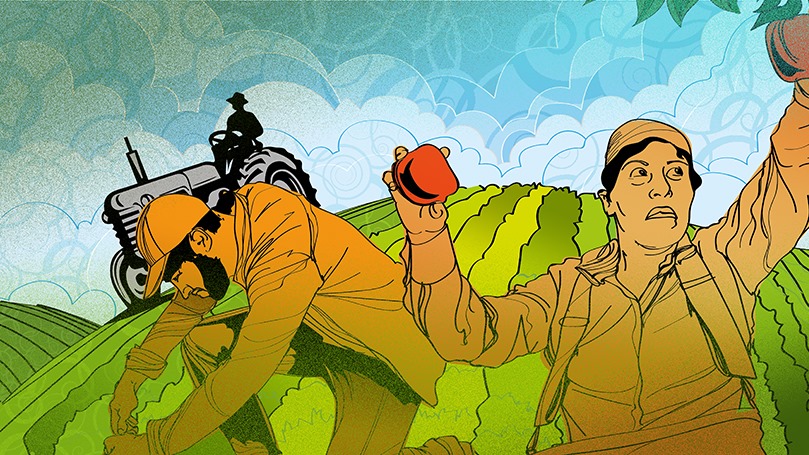
Rev. Williams was living proof that evangelical Christians are not necessarily right-wing zealots. A white man, he preached the social gospel that the true teaching of Jesus was love and unity of all people, African American, Latino, Asian American, and white. Racial hate and bigotry are heresy, lies straight out of the mouth of Satan. He was called a “Communist” or “fellow traveler,” hauled before the House Un-American Activities Committee, and defrocked by the Presbyterian church. Yet he never stopped preaching that poor people, white and Black, face a choice: Organize together or starve.
In the Midwest the Party organized against the plague of farm foreclosures with “penny auctions” in which farmers agreed in advance that the maximum bid for a foreclosed farm would be one cent, enabling the bankrupt family farmers to buy back their farms.
Dairy farmers organized strikes, dumping milk rather than sell it at ruinous prices that were driving farmers into bankruptcy. Grain farmers, dairy farmers, and other agricultural producers fought for “100% parity prices” administered by the federal government to ensure farmers a fair price for their crops high enough to make a modest, livable, sustainable profit.
Some family farmers were members of the Communist Party and became legendary fighters, such as Fred Stover, Iowa Farmers Union president, and Homer Ayres, a Party member in Sturgis, South Dakota.
The cooperative movement swept rural America with dairy farmers setting up marketing cooperatives like Land-O-Lakes and Darigold — now infiltrated and gobbled up by corporate interests. Cooperative general stores were set up selling everything from groceries, clothes, and hardware to tractors and agricultural implements at reduced prices. The concept of the cooperatives was that farmers would organize, become members of these co-ops, and manage them in the interests of the farmers and the rural community.
Helvi and Matt Savola were managers of one of these co-op general stores in the Upper Peninsula of Michigan and later in Minnesota. Matt Savola had been a hard-rock copper miner in Butte, Montana, and an organizer of loggers into the Left-led International Woodworkers of America, an epic story told in the book One Union in Wood.
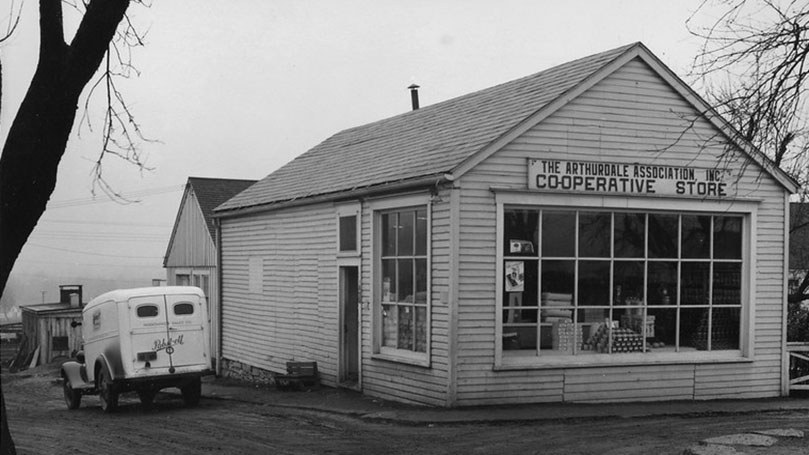
Dedicated members of the Communist Party USA, Matt and Helvi found it perfectly natural that farmers and workers unite against a common, parasitic enemy, the banks and agribusiness corporations that exploited working people, whether farmers and farmworkers or miners and loggers.
No Party leader exemplified the concern for the masses of working people in our rural communities as much as Helvi Savola, a member of the Party’s National Committee from Minnesota who chaired the CPUSA Farm and Rural Commission until she died.
At every meeting of the CP National Committee, Helvi would speak, telling the Party, in so many words: “Do not forget the farmers, the rural communities. The people are hurting. They need our help!” But the Farm and Rural Commission ceased to exist after she died, and our attention shifted elsewhere. It is high time we restored our work in rural America, in honor of Helvi Savola.
Another Communist, George A. Meyers, was for many years labor secretary of the Communist Party, USA. He led the drive that unionized Celanese Corporation workers in Cumberland, Maryland, into the 10,000-member Textile Workers Local 1874, the largest union local in the nation. Later he was elected president of the Maryland-D.C. CIO. He and others worked with the United Mine Workers president, John L. Lewis, in founding the Congress of Industrial Organizations, which organized millions of workers in the mass production industries, steel, auto, mining, and chemical.
Meyers was deeply imbued with the fightback spirit of coal miners like his father, and auto and textile workers in Lonaconing, Cumberland, Hagerstown, and other small rural cities of Maryland — as well as the fightback spirit of African American, Latino, and white workers in big cities like Baltimore.
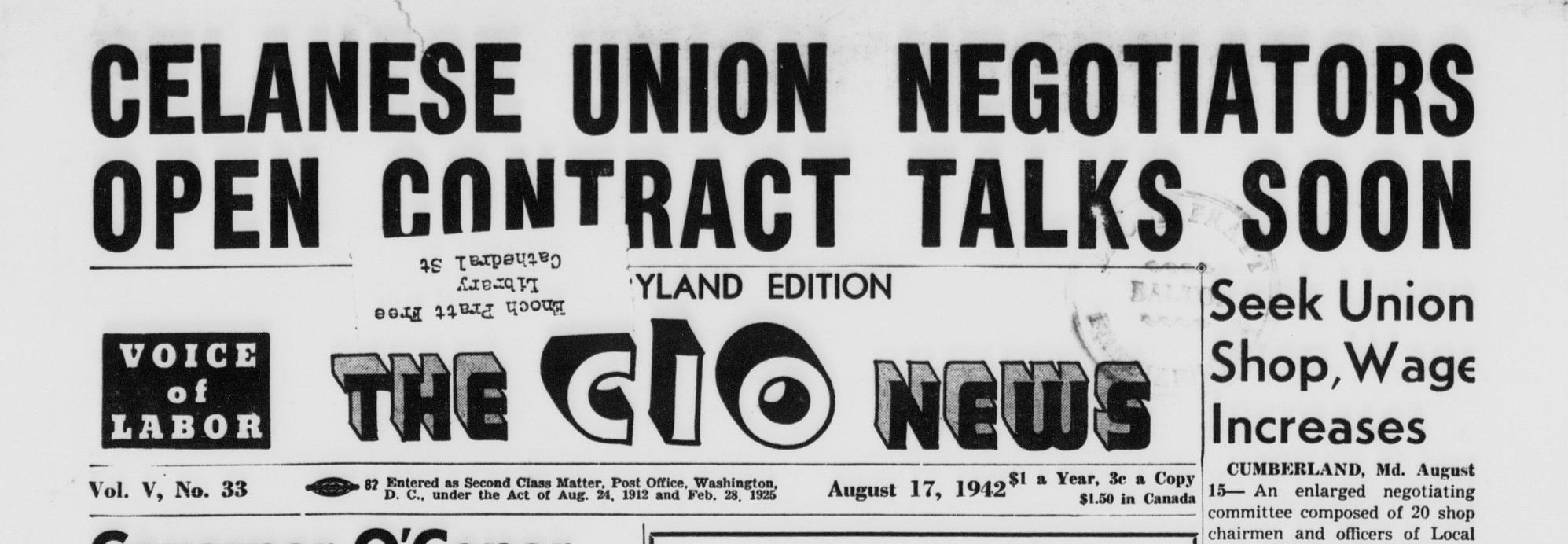
These Communists added something crucial to the struggle in rural America. Yes, they were leaders in their communities in the fight for immediate demands to ease the crisis. But they also brought a Marxist analysis to the crisis — an understanding that monopoly banks and corporations were the source of the rural crisis. They argued that socialism, a system of public ownership of the means of production, was an urgent necessity to end the system of exploitation of rural workers and farmers.
Rural America needs us right now. Big coalition efforts must push back against the far right, whose influence—often amplified by the Evangelical church—is nearly unchecked in some areas. Far-right radio is the only mass media in many agricultural communities.
Will we allow the far right, the Proud Boys, Oath Keepers and QAnon to usurp and speak for rural America? Or can we find ways to reach rural Americans, raise class consciousness, and amplify progressive voices?
Joe Sims, co-chair of the CPUSA, put it eloquently in his recent opening report to a meeting of the CPUSA National Committee: “We are not leaving any sector of our class behind.” These masses of rural women and men are our brothers and sisters. We need them and they need us.
The farm and rural economy: Family farmers lose ground
In 1900, 40% of U.S. households lived on farms and 60% of the U.S. population lived in rural America. Today, 1% live on farms and 20% live in rural America or about 60 million of the 324 million total U.S. population. There has been a steady attrition in the population from most of rural America, even though the USDA under Trump claimed that the population had stabilized, rural net income had risen, and poverty had fallen.
But take a closer look. (Much of this information pre-dates negative impacts of the COVID-19 pandemic.)
A USDA report shows an infinitesimal population gain of 0.08% — eight hundredths of one percent — in rural America. The sharp loss of population in much of rural America has been offset by population growth in 485 counties, “more densely settled rural areas with attractive scenic qualities or those near large cities . . . high amenity regions such as Florida, the upper Great Lakes and the Pacific Northwest.”
The report shows that while net household income in urban America has finally risen barely above the level before the last recession of 2008, rural America is still locked nearly 2% below the pre-recession level. And all the economic indicators are down in this age of raging COVID-19.
During Trump’s four years in the White House, the number of farms in the U.S. fell from 2.2 million to 2.0 million — a nearly 10% rate of liquidation. The average size of farms has risen from 150 acres in the years before World War II to 450 acres today. Smaller farmers are bankrupted by debt, forced to sell their land, homes, barns, livestock, and implements to larger farmers that get bigger and bigger in a race to survive. Due to vertical integration of livestock farming in Iowa, the number of pork farmers fell from 80,000 family farmers to only 8,500 by the mid-1990s.
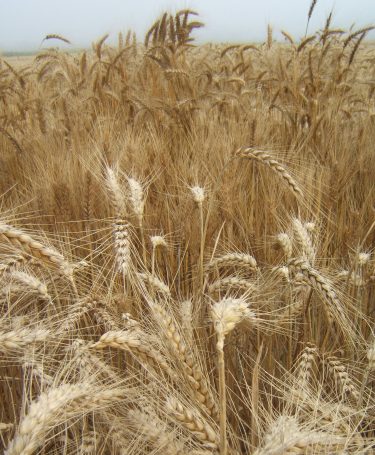 Farmers are caught between the low prices they receive for the crops they produce and the rising cost of production. They are dominated by the monopoly corporations that sell them tractors, implements, fuel, seed, and fertilizer and are at the mercy of agribusiness that buys their produce, whether grain, vegetables, milk, or meat. As the farmers’ profit margins shrink, they have no choice but to expand or go bankrupt.
Farmers are caught between the low prices they receive for the crops they produce and the rising cost of production. They are dominated by the monopoly corporations that sell them tractors, implements, fuel, seed, and fertilizer and are at the mercy of agribusiness that buys their produce, whether grain, vegetables, milk, or meat. As the farmers’ profit margins shrink, they have no choice but to expand or go bankrupt.
Yet farms with sales of less than $25,000 annually are more than half the remaining 2 million farms. By contrast, large farms with more than $500,000 in annual sales — 7.5% of the total number of farms — account for 80% of the value of farm output.
Both net farm income and net cash income are down sharply, 52% and 32% respectively. In 2018, net on-farm income fell 10.3% to a pitiful $21,130, while off-farm income rose 2.8% to $98,122. More than half the farms lose money from farming and are only kept afloat by off-farm income.
This means that farmers moonlight to jobs in town, with the husband or wife working as a school teacher, librarian, waitress, nurse, or clerk at the local supermarket. The USDA report offers charts with “median on-farm household income that ranged from a low of MINUS $3,040 in 2008 to MINUS $118 in 2014.”
Farm Bureau Federation economist John Newton writes that, following years of declines in net farm income and median household income, “farm debt levels have accelerated.” Farm debt in 2018 was forecast at a record $389 billion, up nearly $4 billion from 2017’s record high.
Newton also cites the “debt-service ratio,” the percentage of farm income that farmers are forced to cough up to cover interest and principal on their loans. It reached a staggering 27.2% of total farm income in 2018.
A major factor aggravating the farm crisis was President Trump’s “trade war” with China. The tariffs Trump imposed on China triggered an expected retaliation from China, causing a 75% reduction in U.S. exports of soybeans to China and similar sharp reductions in other crops. Exports to China were $24 billion in 2014 but fell to $9.1 billion in the following year. Trump attempted to make up for it by ordering the USDA Commodity Credit Corporation to pay $45 billion in bailouts to farmers to make up for their losses.
However, as an article in Forbes Magazine points out, “the bulk of these payments went to wealthy farms and well-connected corporations while providing little relief for the neediest farmers and ranchers. . . . It is estimated that a staggering 40% of the (farm) sectors income this year will come from government subsidies,” or welfare for corporate agribusiness.
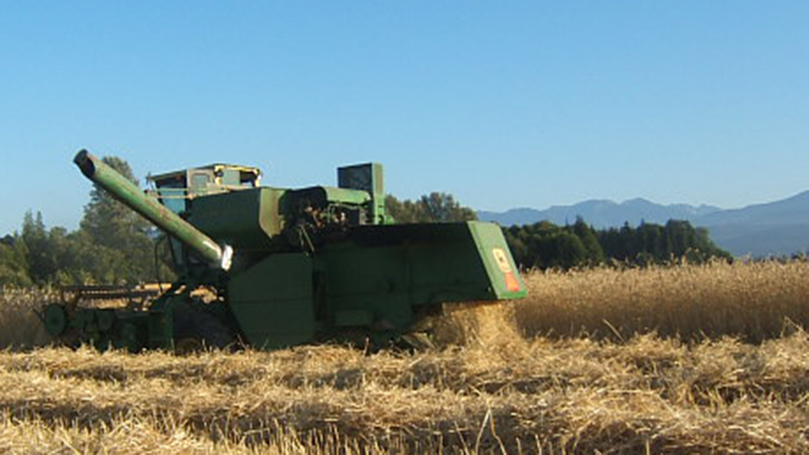
Workers in manufacturing lose ground, too
The transition from horse cultivation to tractor cultivation, the invention of ever more efficient farm implements, was a revolution in the means of production that makes it possible for one farmer to feed hundreds of people. Tractor and farm implement manufacturing employed tens of thousands of workers, many of them unionized by the United Auto and Agricultural Implement Workers, the United Steelworkers, and other unions. Yet of the scores of companies that once built tractors and implements, only seven remain. Agricultural implement workers have struggled against plant closings and layoffs in cities like Chicago, once the headquarters for International Harvester, Waterloo, Iowa, a center for John Deere production, and the Quad Cities “Farm Implement Capital of the World.” Typical is the AGCO tractor plant in Hesston, Kansas, that employed 1,850 workers represented by the United Steelworkers. The company has laid off hundreds of workers in recent years. A company spokesman blamed “lower farm income” for the layoffs.
Corporations dominate the food system
Corporate factory farming provides highly suspect food, wrecks farming, and destroys the environment. Huge filthy, stinking hog and cattle concentrated animal feeding operations (CAFOs), for example, befoul the waterways, air quality, and drinking water for miles around.
Agribusiness dominates farming. Independent farm producers like poultry farmers live in conditions of servitude, even outright peonage to agribusiness giants like Perdue and Tyson.
Monsanto specialized in genetically modified organisms (GMOs), “freak food” that has sparked a national movement for “GMO free” food. Monsanto was so widely despised that it was liquidated, bought out by Bayer, the aspirin company, which is now paying billions to cancer victims of Monsanto’s infamous “Round-Up” cancer-causing herbicide.
 Monsanto sued 145 farmers for “patent infringement” when they planted Monsanto-developed seeds resistant to glyphosate, the herbicide and main ingredient in “Round-Up.” The farmers had set aside part of their herbicide-resistant crop as “seed corn” or bought the seeds from elevator operators.
Monsanto sued 145 farmers for “patent infringement” when they planted Monsanto-developed seeds resistant to glyphosate, the herbicide and main ingredient in “Round-Up.” The farmers had set aside part of their herbicide-resistant crop as “seed corn” or bought the seeds from elevator operators.
Monsanto even lobbied to install one of their corporate attorneys on the U.S. Supreme Court — Justice Clarence Thomas. The Supreme Court, with Thomas voting with the majority, upheld a Monsanto lawsuit 7 to 1 on their alfalfa seed. Thomas did not recuse himself for this flagrant conflict of interest.
Monsanto developed sterile seeds so farmers can no longer save part of their crops as “seed corn” to plant next year’s crop. Again, the farmers are in perpetual bondage, forced to buy more of the sterile seeds to keep on growing. Monsanto’s, or Bayer’s, domination is global and so ruthless that it has triggered a plague of suicides by farmers in India ruined by agribusiness profit greed. Monsanto defunct? Good riddance! But now Bayer has taken its place.
Another sector that corporations ruthlessly dominate is the farm equipment business. Companies like John Deere impose “extended use license agreements” on farmers, which prevent farmers from repairing their own equipment and force them to hire expensive contractors. With software-based equipment, companies refuse to support older software, which pressures farmers to purchase new software and equipment.
The banks of marble: Blood-soaked history
Rural America has been the scene of ruthless class struggle since the founding of the Republic, from chattel slaves against the slave owners to independent farmers in the Whiskey Rebellion after they had served honorably in the American Revolution.
During Black Reconstruction after the Civil War, freed slaves organized in the Deep South under the Freedmen’s Bureau and struggled for unity with the other powerful grassroots movement, rural populism. The leader of the populists, Tom Watson, spoke eloquently of the need for poor white and African American farmers to unite in their common interests.
Smashing that multiracial movement based in rural America was the main assignment of the Ku Klux Klan, who imposed a reign of terror through lynching to prevent joint action against the former slave owners.
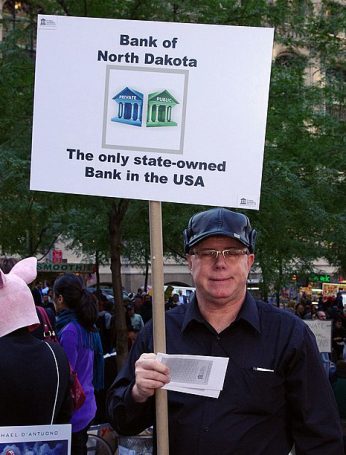 In the late nineteenth and early 20th centuries, it was Midwest farmers against the banks and railroads. In North Dakota, the Non-Partisan League was so strong it pushed through a publicly owned state bank and publicly owned grain elevators to break monopoly control of the banks and railroads. In Minnesota, the Farmer Labor Party elected Elmer Benson, a socialist, as governor. The Right used war hysteria during World War I and after to launch the “Palmer Raids” and vicious repression to smash this progressive upsurge in rural America.
In the late nineteenth and early 20th centuries, it was Midwest farmers against the banks and railroads. In North Dakota, the Non-Partisan League was so strong it pushed through a publicly owned state bank and publicly owned grain elevators to break monopoly control of the banks and railroads. In Minnesota, the Farmer Labor Party elected Elmer Benson, a socialist, as governor. The Right used war hysteria during World War I and after to launch the “Palmer Raids” and vicious repression to smash this progressive upsurge in rural America.
In the 20th century, rural America has been more and more dominated by giant energy conglomerates. In Appalachia, coal miners organized by the United Mine Workers fought Consolidation Coal Company, Duke Energy, and the Massey Corporation, and the Oil Chemical and Atomic Workers mobilized against Exxon, Mobil, Texaco, Chevron, and BP.
In forestry, loggers, tree planters, and mill workers faced Georgia-Pacific, Weyerhaeuser, Simpson Timber Co., and Crown Zellerbach.
Copper miners battled Anaconda Copper, ASARCO, and Kennecott; in aluminum it was Kaiser and Reynolds.
Grain farmers fought Cargill, Continental Grain, Archer Daniels Midland, and General Mills. For poultry it was Tyson and Perdue; for pork, Hormel and Smithfield.
Many of the meatpacking plants were unionized by the International Union of Meatpackers and Butcher Workmen, later the United Food and Commercial Workers, in heroic strike battles in Chicago. The UFCW has fought and won a struggle to unionize Smithfield meatpacking workers in North Carolina.
Some of the sharpest labor battles in U.S. history were in the textile industry — the immortal Gastonia, North Carolina, textile strike, and the J.P. Stevens organizing drive a generation later in Roanoke Rapids, N.C.
Farmworkers: Coalition partners for change
Woody Guthrie wrote a song titled “Pastures of Plenty.” Every line of that song sends chills up and down our spines:
California, Arizona, I harvest your crops
Well, it’s up north to Oregon to gather your hops
Dig the beets from your ground, cut the grapes from your vine
To set on your table your light sparkling wine.
The song, with its haunting melody and poignant lyrics, expresses the enormous hardship endured by farmworkers, who are paid barely above starvation wages and forced to travel long distances and live in slum housing to grow and harvest the food that feeds us all.
In December of last year, the Economic Policy Institute (EPI) released a report based on data uncovered by the U.S. Department of Labor’s Wages and Hours Division (WHD) showing that 70% of all agricultural enterprises investigated by the WHD were found in violation of the Fair Labor Standards Act.
It included “wage theft” so widespread that every farmworker employed was owed in excess of $500, with their agribusiness employers chiseling the workers on overtime pay and other forms of stealing wages owed these workers.
In 2019, farmworkers’ average wage was $13.99 per hour, while the average wage for all workers in 2019 was $26.53 per hour. Daniel Costa, research director on immigration law at the U.S. Labor Department WHD said that the farmworker wage “was just 53% of the average for all workers,” barely over half. It is graphic proof of just how urgent it is to win an increase in the federal minimum wage, now $7.25, to $15.00 an hour. That long overdue increase in the minimum wage is part of President Biden’s program to “rebuild better” in the wake of Trump and COVID-19.
“Farmworkers are some of the lowest-paid workers and most either lack an immigration status or have a temporary status, which makes it difficult for them to complain about workplace violations,” states the report. “Meanwhile, the COVID-19 pandemic has exposed how the often exploited and essential farm workforce that is feeding Americans is not sufficiently protected.”
Farmworkers are exempted from the protections of the National Labor Relations Act, including the right to organize unions and engage in protected, concerted activities — like strikes — to improve their working conditions.
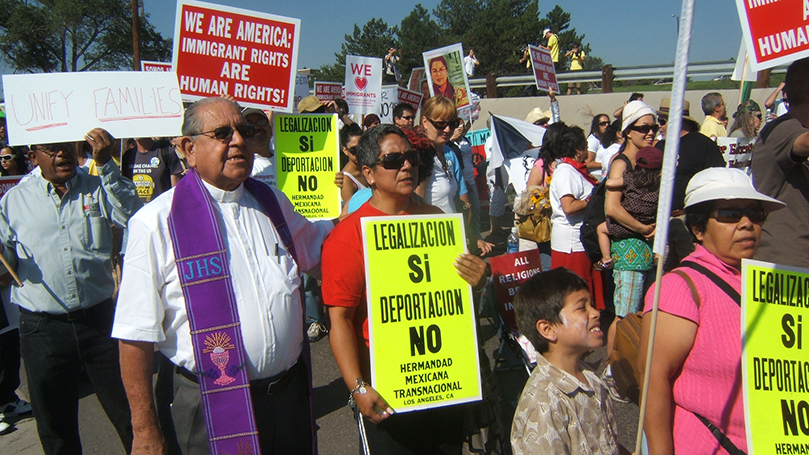
The EPI report quotes Costa, at the Labor Department: “The immigration status of farmworkers, fear of retaliation and deportation, and even the perception that the WHD will not take action . . . can contribute to farmworkers not reporting violations.”
Since the budget of the WHD has been cut so savagely, the number of investigations of agricultural enterprises has been cut in half. “Thus the violations that are actually detected may be the tip of the iceberg when it comes to workplace violations suffered by farmworkers.”
COVID-19 makes this crisis a matter of life and death, Costa said. “It is urgent that the incoming Biden administration prioritize the health, safety, and paychecks of Farmworkers.”
The WHD conducted about 31,000 investigations of agricultural enterprises in the 19 years from 2000 to 2019 — or about 1,600 investigations per year. The agency ordered these enterprises to pay back $76 million in stolen wages to 154,000 farmworkers and assessed $63 million in civil penalties for violations. Yet investigations have plunged, so that in 2019 a mere 780 investigations were conducted — less than half the number of investigations in previous years. An agribusiness job contractor has only a 1.1% chance of being investigated — and caught. The rock-bottom rate of investigations is an invitation to agribusiness to engage in wholesale wage theft.
In the age of COVID-19, these farmworkers, millions of them migrant and seasonal, are “frontline workers” suffering among the highest rates of COVID-19 infection and death. Meatpacking plants employ approximately 500,000 workers, mostly Latinos, other people of color, and immigrants. Most of these plants are non-union. The callous, profit-greedy attitude of Hormel, Tyson, Perdue, and other meat and poultry packers was shown when COVID-19 erupted.
The Republican governors in Nebraska, South Dakota, and other states refused to order these corporations to close or even obey safe practices like mask wearing, social distancing, testing, and vaccinations. These are crimes that must be prosecuted! Protection of these frontline workers must be a top priority.
Farmworkers have a long history of struggle to win living wages, decent living conditions, and safety from exposure to dangerous herbicides. Cesar Chavez and Dolores Huerta founded the United Farm Workers of America. They blazed paths of fightback that pulled huge numbers of people across the nation into the boycott of lettuce and grapes, and fought for contracts with giant agribusiness growers in California, Arizona, Washington State, and Florida.
Another giant in union organizing was Bert Corona of Los Angeles, a friend of Cesar Chavez and a leader of the International Longshore and Warehouse Union (ILWU), recruited by the CIO to organize Mexican American miners and farm workers.
In Ohio, North Carolina, and South Carolina, the Farm Labor Organizing Committee (FLOC), affiliated with the AFL-CIO, is working hard to organize farmworkers.
In Florida, the Coalition of Immokalee Workers (CIW) has waged a decades-long struggle to win fair wages and working conditions for farmworkers. As this is written, the CIW is mobilizing protests against the murder of a farmworker, Nicolas Morales, on September 17, 2020, by a white Collier County sheriff’s deputy who shot Morales on a quiet street in Farmworker Village just outside Immokalee, Florida.
In Oregon, it is Pineros y Campesinos Unidos Noroeste (PCUN, Tree Planters and Farm Workers United).
In Washington State, COVID-19 spread like wildfire among farmworkers, so desperate that Yakima County became the worst jurisdiction on the West Coast for COVID-19 infections, 26.5%. The statewide rate for Washington was 6%. People of Latin-American origin were 49.8% of people testing positive for COVID-19 but only 13% of the total population of Washington State.
Finally, in June 2020, 400 workers at seven fruit-packing companies went out on strike. The owners actively discouraged wearing of masks and forced the workers to buy their own masks if they chose to wear them. Coinciding with the strike, Familia Unidos por la Justicia in Skagit County and the UFW filed a lawsuit against the Washington State government. It was an election year; the suit was settled quickly, and the strike was settled too.
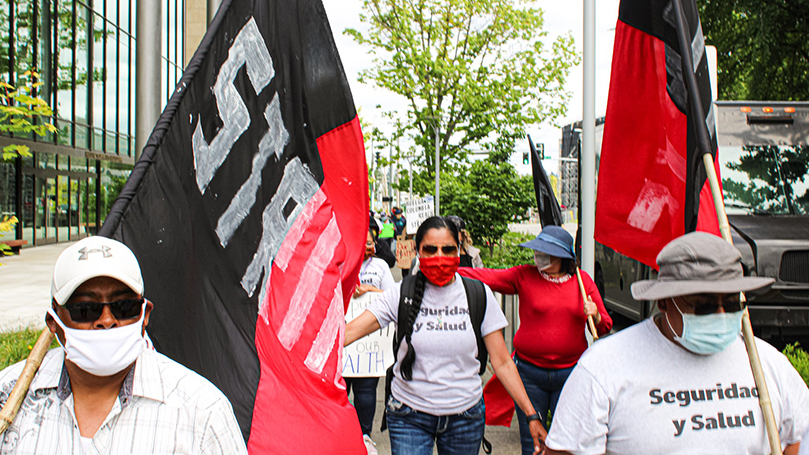
Farmworkers know that winning in negotiations with agribusiness employers is not enough. They are demanding legislation to protect farm worker wages and benefits. Their demands also include justice for immigrant workers: an end to fear, intimidation, and mass deportation; sweeping reform of the H-2 guest worker program; and a path to citizenship for millions of undocumented immigrant farm workers.
Rep. Joaquin Castro (D-TX) introduced the Seasonal Worker Solidarity Act on December 15, 2020, to make certain that seasonal farm labor is safe and that the rights of non-citizen workers are protected.
AFL-CIO President Richard Trumka hailed the bill as a step toward “the simple notion that seasonal jobs should be safe, good jobs.” Trumka added, “The pandemic has exposed the systemic undervaluing of work now understood to be essential and increased recognition of the need for enforceable worker protections. Our current abusive model of guest-worker programs has made workers into disposable commodities in the global economy which is why unions have long called for these programs to be restructured.”
Trumka said Castro’s bill “pioneers a new framework for work visas . . . lifts workplace standards and prevents discrimination and displacement.” It would end “captive employment in the H-2B program, respect family unity and afford migrant workers a well-earned path to citizenship.”
President Biden has already taken action to end Trump’s vicious war on immigrant workers and farmworkers in general. He has ordered a halt to the construction of Trump’s wall and taken immediate steps to reunify children torn from their mothers’ arms at the U.S.-Mexican border by ICE. He has extended the DACA program. So it should be possible to reconcile Castro’s bill with the Biden-Harris comprehensive immigrant rights reform.
A program to organize unorganized workers is an essential for any basic solution to the general crisis in rural America. The powerful grassroots coalitions that generated 81,000,000 votes for Biden-Harris, that carried Georgia for Biden-Harris and put Rev. Raphael Warnock and Jon Ossoff in the U.S. Senate must now help farmworker organizations like the United Farm Workers, FLOC, PCUN, and CIW organize farmworkers. It is a crucial part of turning all those red states blue.
Humans cause climate change? Think of one word: “dustbowl.”
Farmers and ranchers and other rural Americans have no trouble understanding that human activity is a cause of devastating floods, droughts, wildfires, tornadoes, hurricanes, and freak winter storms like the deep freeze that engulfed Texas with scores of people freezing to death in their homes.
Never in recent human history have we witnessed so many weather disasters. And farmers, ranchers, and rural Americans have borne the brunt. Flooding has wiped out millions of acres of crops and killed livestock. Drought and wildfires have burned up millions of acres of farmland and timber in California, Arizona, Oregon, and Washington.
Natural disaster is not new to rural America. John Steinbeck’s Grapes of Wrath immortalized the hundreds of thousands of farmers and ranchers driven into bankruptcy, off their farms, and onto the road to California by drought and dust storms in Oklahoma.
Yes, in those days there were reactionaries just like Trump who denied the science. They denied that human error was the main factor in the dustbowl. Sodbusters armed with plows stripped away the tough prairie grass, which was replaced with corn and wheat. A prolonged drought killed off these crops, leaving the ground bare. Winds swept in and turned day to night, dusted us over and covered us under.
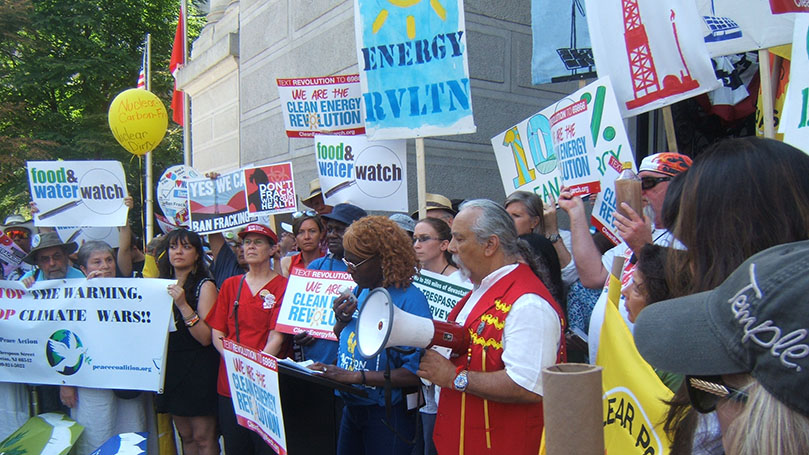
The federal government, in the form of Franklin Roosevelt’s New Deal, implemented sweeping reforms that introduced methods of cultivation, crop rotation, irrigation, and other conservation measures during the 1930s.
We have never since suffered a repeat of “Dustbowl Days.” Until now! Today, we are witnessing a natural disaster far more destructive than the dustbowl — the entire planet warming. Global climate change calls for profound changes in our rural physical and social infrastructure, including modernization of our aging and inefficient power grid with far more solar and wind power, with farmers, ranchers, and utility workers rewarded generously with good-paying jobs and benefits, for facilitating a strong shift away from fossil fuels. Call it a “Green New Deal.”
We should ban fracking that endangers our water tables and continues our reliance on global warming fossil fuels.
We need a crackdown on profit-driven electric utilities like Pacific Power & Gas that charge ruinous rates while failing to keep their power lines clear of brush and debris, a major factor in the wildfires. Removal of aging and inefficient dams like the four dams on the Snake River will help save salmon and Orcas from extinction. Halt the construction of tar sands pipelines across much of the Midwest, including lands sacred to Native American Indian tribes. A rupture in one of these pipelines would pollute thousands of acres of the Great Plains.
Strengthen the Environmental Protection Act and the Endangered Species Act. Protect all national forests, national parks, and other federal lands from greedy oil, timber, and mining interests. Enact legislation to curb strip mining that endangers the environment like mountaintop mining in Tennessee, Kentucky, and West Virginia. Outlaw the Pebble Mine in Alaska that menaces the greatest sockeye salmon spawning grounds in the world and threatens Bristol Bay, the most productive fishery in the world.
Grassroots coalition is already sprouting
The seeds of a grassroots movement strong enough to challenge corporate Republican domination in rural America has already been planted and is sprouting. Our Party must connect with this rural upsurge and serve as “switchboard operators” helping connect and unite the many contingents of this movement across our far-flung land.
We need to increase our coverage of rural America in the People’s World. We need more leaflets, pamphlets, books, and blogs about the crisis and the fightback in rural America. Since it is a sprawling, multifaceted struggle, we need to focus on specific issues, bite-size, for people to digest. Culture is also part of the struggle — more music, songs, dance, art, like Woody Guthrie’s and Leadbelly’s songs.
And, of course, it is not only rural people who need to read about and understand rural America. Remember Lem Harris: We all eat, and all of us are involved in agriculture.
Wherever we can, we must be initiators of grassroots action in defense of the rights of the people in rural America. We should never underestimate our skills as organizers and activists who, by working at the grassroots, can move millions.

Consider some of the organizations in this movement: Rev. William Barber’s Poor People’s Campaign, The National Farmers Union, the National Farmers Organization, American Agriculture Movement, The National Black Farmers Association, the Latino Farmers and Ranchers Association, The United Farmworkers, the movement against mountaintop removal mining, The Rural Coalition, and Regenerate Nebraska Organic Consumers.
It is important to note that a growing coalition of Black, Latino, Indigenous, people of color, and white people has grown bigger and stronger since the Black Lives Matter movement of 2020 when tens of millions of protesters marched, including in rural America, to protest the murder of George Floyd, Breonna Taylor, and hundreds of others by rogue white police.
The influence of this mass upsurge is often reflected in the election or appointment of officials — Deb Haaland, for example, named by President Biden as the first Native American Indian Secretary of the Interior. It is estimated that Biden-Harris won 81% of the Navajo vote in the 2020 election. The Native American Indian vote — Navajo, Hopi, Apache, and others — was the margin of victory for Biden-Harris in the state of Arizona.
An action program for rural America
The multiracial movement that won such a huge victory on November 3 must embrace and work to achieve basic reforms that preserve and expand democracy and provide benefits that will raise the living standards of both urban and rural people. First, are measures to protect basic, democratic rights, like voting rights and measures to stop police killings of innocent unarmed people of color. Here are a few demands that require immediate action:
- Demand that the Senate pass the House-approved “For the People Act” (S.1) to expand voting rights and block Republican measures to strip millions of people, especially people of color, of their voting rights.
- Demand the Senate pass the House-approved George Floyd Justice in Policing Act to end the nationwide plague of police killings of innocent, unarmed African Americans and other people of color.
- The House and Senate approved, and President Biden signed, the Biden-Harris $1.9 trillion American Rescue Plan Act. This was an enormous victory, the first fruit of the November victory. We should follow up with demands that “underserved” communities get their fair share of these funds. And that includes rural America, often shortchanged in distribution of federal benefits.
- Improved “Medicare for All” is urgently needed in rural America where vast numbers of the population lack health insurance.
- Approve a $15 minimum wage, also endorsed by Biden-Harris, desperately needed in rural America where the working poor are even poorer than urban workers.
- Build and rebuild rural public health infrastructure. We demand public health clinics, including new construction where needed, and staff in every county or region with 50,000 or more people.
- Federal and state funding to build and repair our nation’s aging public schools. An end to consolidation. An end to reliance on portable additions to schools that have become permanent.
- Construction of affordable homes and public housing to address homelessness in rural America.
- Expand public transportation through construction of high-speed rail and public transit in rural communities to serve those who commute to urban centers for jobs but also to serve workers, students, and retirees in those rural communities. It will create jobs in the construction and operation of affordable, reliable mass transit.
- Expand high-speed internet and broad-band access in every rural community.
- Rebuild our aging power grid. Federal funding for the “Green New Deal” on the scale of the “New Deal” Rural Electrification program. Shift from fossil fuels to wind, solar, and hydro. Displaced coal miners and oil and gas workers must be first on the list of workers hired in these green jobs.
- Dams that have destroyed salmon and other fish must be drastically modified or removed to restore these precious species.
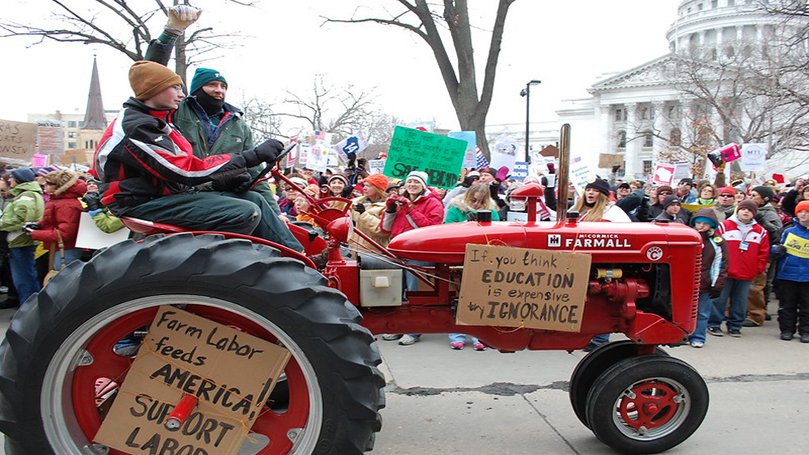
Family farms and meatpacking
Our program must include measures to defend family farmers, to dramatically expand the number of family farmers living secure lives on the land they own or rent. It must include measures to help organize into unions all workers who toil as migrant farm workers, farm hands, and meatpackers:
- Guarantee that a far higher proportion of loans and other federal farm financial assistance goes to small and medium-sized producers rather than the current practice of awarding the hog’s share of these benefits to factory farms and agribusiness.
- African American farmers were targeted for brazen racist exclusion from all federal farm loans, conservation, and other assistance provided by the USDA. Now, other farmers of color are also organizing — Hispanic, Native American Indian, and Asian Americans. They too are demanding that USDA provide benefits to them.
- Many young people are drawn to the countryside and would like to become farmers. But the cost of setting up a farm — $25,000 in 1948 — is now out of reach, about $750,000. We demand programs that make it possible for people to become farmers, that break the grip of corporate, factory farming. Let it be organic, local, and GMO-, herbicide-free food!
- The goal should be to reverse population loss in rural communities by programs that create jobs that pay living wages and benefits. We need to change from Big Ag/Corporate Beef to local producers and reduce vertical integration of meat-processing facilities.
Rural American is at a crossroads
Rural America stands at a crossroads today despite the exploitation and super-exploitation of rural people, communities, and their resources. It is “beautiful for spacious skies, for amber waves of grain.” It is a place of stupendous productivity, the “breadbasket” that feeds our people and helps feed the world.
The challenge is to break the chains of the giant banks and corporations that despoil and corrupt. The challenge is to draw these 60 million people into the movement for race and gender equality, green energy, green jobs, for safe and nutritious food, an end to factory farming and the return of family farms, and an end to global climate change.
We must recruit them into the struggle for democracy and Bill of Rights socialism. That is the challenge we must embrace if we hope to block the Republican extremists from rolling back the gains we won in November 2020 and in Georgia in January 2021.
Images: top, painting of Wheeler farm by Tim Wheeler (TW); Jan. 6 insurrection, Blink O’fanaye (CC BY-NC 2.0); “Farmworkers,” CPUSA; Black Farmers Demand Justice (TW); Co-op store, FDR Presidential Library and Museum (CC BY 2.0); CIO News headline, Library of Congress; wheat, harvester, sunflowers photos (TW); Bank of North Dakota supporter, David Shankbone, Wikipedia (CC 3.0); Immigrants rights protest (TW); Farmworkers protest, Familias Unidas por la Justicia (Facebook); Climate protest (TW); Farms Not Arms, anti-Iraq War rally in DC (TW); Tractorcade protest in Wisconsin, Jonathan Bloy (CC BY-NC-SA 2.0).


 Join Now
Join Now